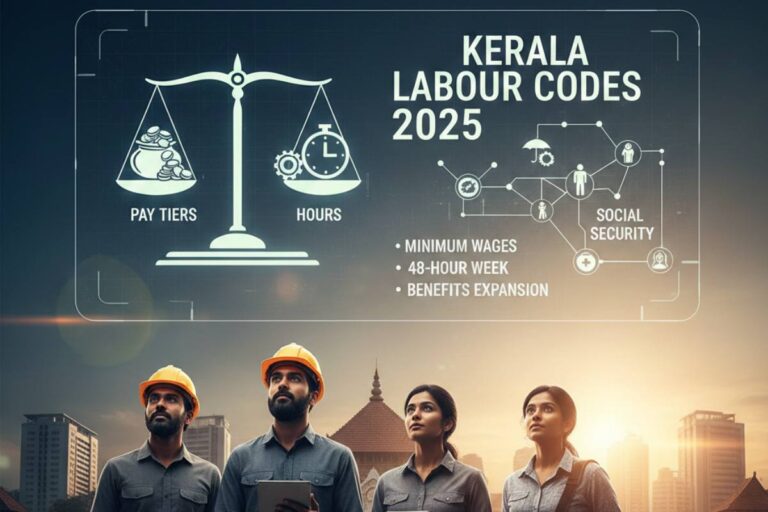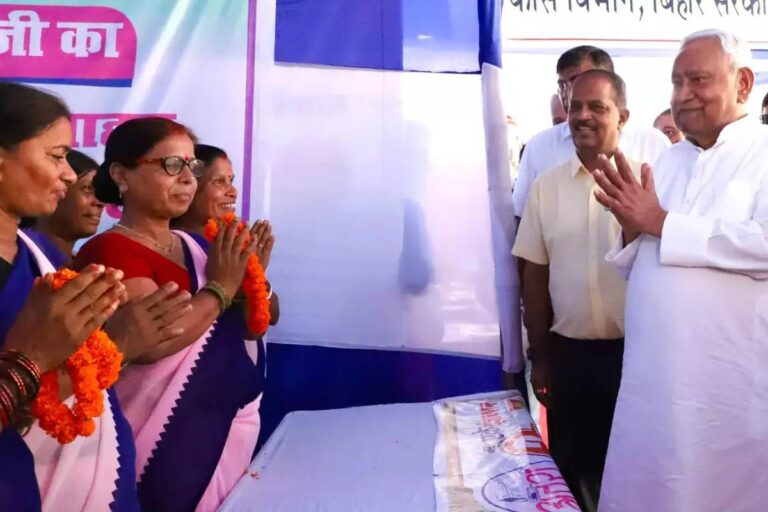New Delhi – The Indian government has made a historic decision that is shaking up the country’s financial system. It is now allowing private sector talent to work at the highest levels of the State Bank of India (SBI) and other public sector banks (PSBs). It’s a policy change that breaks a decades-old tradition and is the first of its kind in the country’s banking history. Everyone is talking about it.
A private bank professional could be in the running for the highly sought-after position of Managing Director at SBI, the country’s largest lender, for the first time. This isn’t just a small change to the rules; it’s a big change in how people see and choose leaders in the state-run banks that are the backbone of India’s economy. The Appointments Committee of the Cabinet (ACC) approved the decision, which is being called a major reform that will bring new levels of professionalism, meritocracy, and competition to the public banking system. But, like any big change, it has its critics.
The Landmark Shift: What Is Changing?
So, how does this policy change really look in practice? It’s a carefully planned opening of the gates, not a free-for-all. The government is starting with a few key positions, probably to see how things go before doing it more broadly.
Here are the main changes:
- SBI Managing Director: Candidates from the private sector and other public sector financial institutions can now apply for one of the four Managing Director (MD) positions at the State Bank of India. Up until now, only people who worked at SBI and moved up through the ranks could get these top jobs.
- Executive Directors in PSBs: The change goes beyond SBI. People who work in the private sector will also be able to apply for the Executive Director (ED) position at other public sector banks. For bigger nationalized banks with four EDs, one of these jobs will be open to everyone who meets the requirements, even those who work for private companies.
This change is part of a larger set of new rules for hiring Whole-Time Directors (WTDs), which includes Chairpersons, CEOs, MDs, and EDs at all public-sector banks and even state-run insurance companies. The government seems to be saying loud and clear that it’s time for a change.
A Closer Look: The New Rulebook
This isn’t a friendly invitation. The government has set strict requirements for who can get in, so only experienced professionals can make the cut. They want a lot of experience.
To apply for the prestigious SBI MD position in the private sector, you must have at least 21 years of professional experience.
- At least 15 of those years must have been spent working in banking.
- Most importantly, they must have worked at the board level of a bank for at least two years or at the highest level just below the board for at least three years.
The Executive Director jobs in other PSBs also have a high bar. Private candidates must have at least 18 years of experience.
- At least 12 years of experience in banking, with three years at the highest level below the board.
But it’s not only about experience. The process of choosing is being changed. The Financial Services Institutions Bureau (FSIB) is in charge of recommending candidates for these top jobs. It can now hire independent HR firms to look at private-sector applicants. The government has decided not to use the usual Annual Performance Appraisal Reports (APARs) to judge outside candidates, which is a big change from the norm. This shows that the assessment model is moving toward one that is more modern, all-encompassing, and focused on performance, one that goes beyond the limits of public sector bureaucracy.
Why Now? The Reason for the Change
Of course, the big question is why make such a big change right now? It looks like the answer has to do with the government’s long-term plans for the Indian economy. The goal is to make public sector banks more flexible, dynamic, and competitive so that they can compete with private sector banks.
A high-ranking official said that the goal of the reform is to “bring transparency, diversity, and merit-based selection in leadership roles across India’s financial institutions.” People often criticize the promotion system in PSBs for favoring merit over seniority.
In the past, Finance Minister Nirmala Sitharaman has said that government banks should be more open to hiring people from outside the company so they can learn best practices and help businesses grow. The idea is that hiring leaders from the private sector could give PSBs new ideas, creative strategies, and a focus on the customer. It’s about changing things up, getting rid of old habits, and getting these banks ready for the future of banking.
What People in the Banking Industry Think
People have had mixed reactions to the move, as expected. A lot of people have welcomed it as a much-needed change, but there is also a lot of opposition, especially from people who work in public sector banking.
Bank unions have spoken out strongly against it. C.H. Venkatachalam, the general secretary of the All India Bank Employees Association (AIBEA), said it plainly: “There is no need to let people from the private sector apply for the top jobs; our own banks have many qualified candidates who can run them just as well.”
Many people who have worked in public sector banking their whole lives agree with this idea. They say that internal candidates know a lot about the PSB work culture, the specific problems they face, and how important their role is in helping the government achieve its social and economic goals. The worry is that someone from the outside might not get these subtleties and put profits ahead of serving the public. This starts a classic argument between insiders and outsiders, which will be fun to watch as it unfolds.
What This Means for India’s Biggest Bank: SBI in Focus
This is a turning point for the State Bank of India. People often look to SBI, the country’s largest bank, as a sign of how the whole banking industry is doing. It is a big deal that the company has decided to let a private sector professional fill one of its MD roles.
It’s clear what the possible benefits are. A new leader could have new ideas about everything from managing risk to digital transformation. They could make SBI even more competitive by introducing new products and services, streamlining operations, and improving the customer experience.
It’s important to point out, though, that the government is being careful. It looks like they’re setting up a controlled experiment by only opening one of the four MD positions. This will let them see how an outside leader fits into SBI’s long-standing culture and how they affect the organization’s performance before making any other changes. For now, the first MD job opening at SBI will be open to all candidates. After that, the company will fill any open positions from within the PSB ecosystem.
The Big Picture: Fixing India’s Public Sector Banks
This change in policy doesn’t happen in a vacuum. It’s the most recent change in a series of changes meant to make India’s public sector banks stronger. For a long time, the way to become a leader in a PSB was long and easy to predict. You started as a probationary officer and worked your way up over the course of many years. This new policy breaks through that glass ceiling.
It adds a level of competition that wasn’t there before, making internal candidates compare themselves to the best in the private sector. The government hopes that this will create a culture of accountability and performance from the top down. The change is a clear sign that the government is serious about improving the public sector and bringing it in line with the best ways to manage talent around the world.
The Road Ahead: Problems and Chances
There are some problems with the way forward. One of the biggest questions is whether PSBs will be able to hire the best people from the private sector. Even at the highest levels, the pay and benefits in public sector banks are only a small part of what a top executive can make in a private bank. Will the prestige and difficulty of running a huge bank like SBI be enough to attract a successful private banker?
Then there’s the issue of how to fit in with other cultures. The way people work in a public sector bank is very different from how they work in a private sector bank. A new leader will have to deal with a complicated bureaucracy, pressure from unions, and a way of doing things that has been around for a long time. It will be a difficult balancing act to make changes while still honoring the institution’s history.
Even with these problems, there are a lot of chances. If private sector workers were brought into the public sector, it could have a positive effect on the whole system, making it more efficient, providing better service, and strengthening the banking system. This is a risky test, and the whole financial world will be watching to see what happens. In the next few years, we’ll find out if this move really is the masterstroke that changes the future of Indian banking.






















